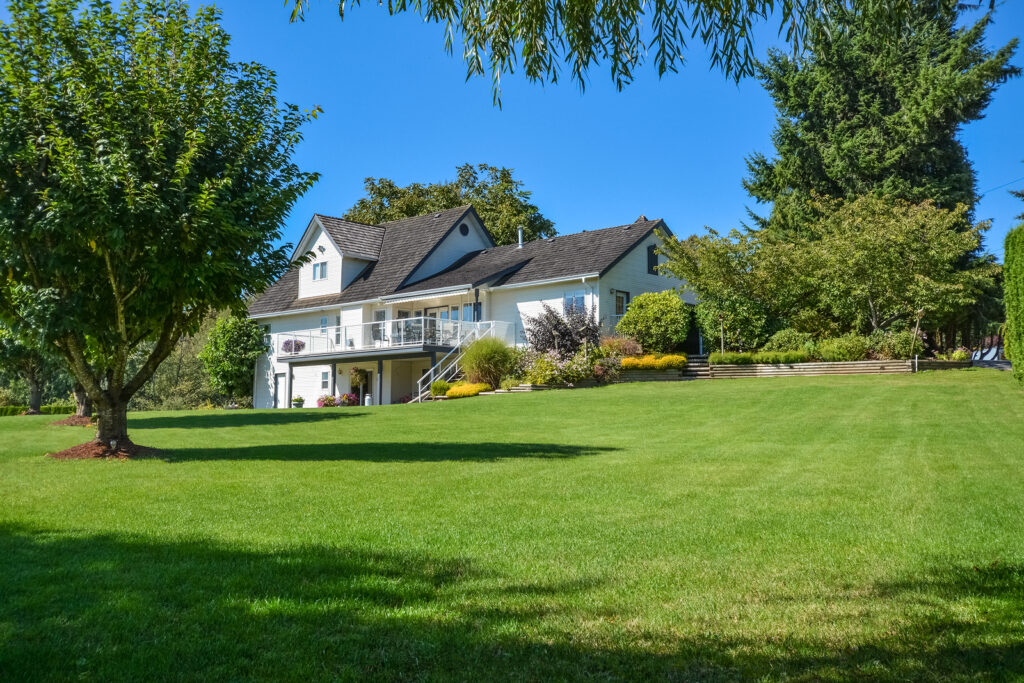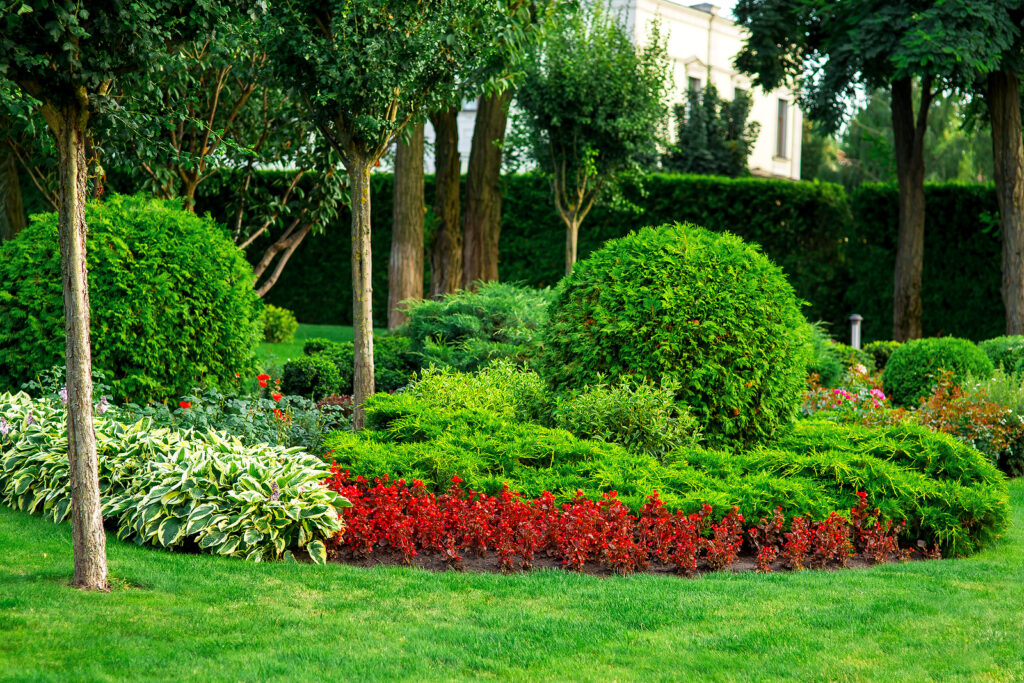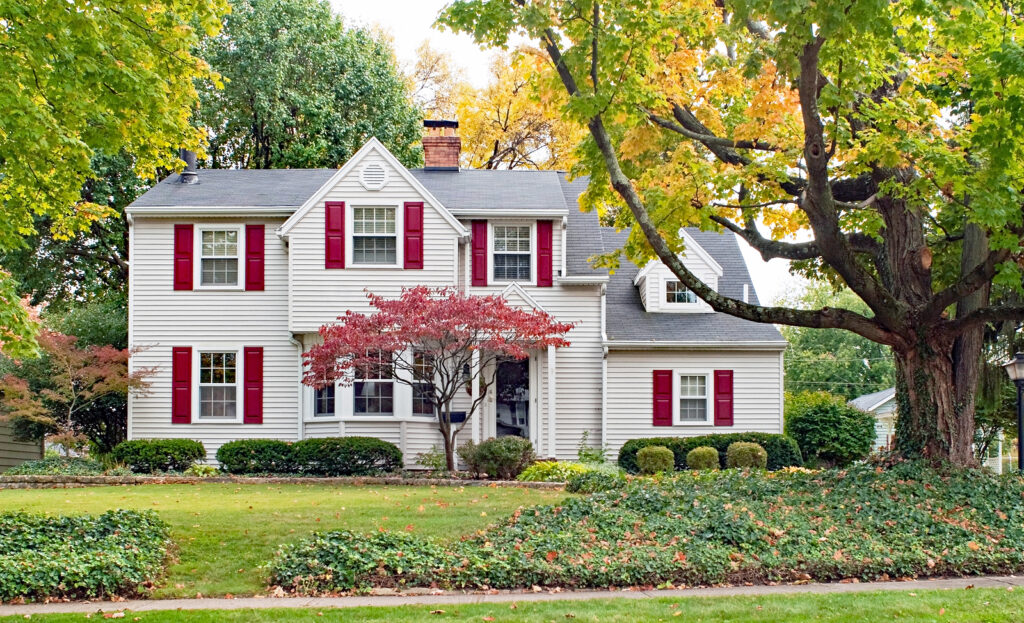Trees are commonly the largest and tallest elements in a garden or landscape design. They also take the longest time to grow.
Trees are commonly defined as woody plants with single or multi-trunks that are greater than 20 feet high. There are dwarf and miniature trees shorter than 20 feet, but they are often treated as shrubs when it comes to design.
A tree can take decades and even centuries to reach maturity. When thinking about adding a tree to the garden or landscape it is important to plant for the ultimate height and spread of the tree as well as the growth rate.
If you want a tree to fill a space in the garden quickly, to get an “instant effect”, you can plant a fast-growing tree, but keep in mind fast-growing trees, in general, are short-lived plants and often have invasive root systems.

Existing trees in the garden
If trees already grow in your garden, you will want to assess their value to the garden and design before deciding to plant new trees.
Here’s considerations in assessing existing trees:
- How old are they? Are they mature?
- Are they growing where you want them to grow? Are they too close to the house or driveway of the street?
- Are they properly pruned? Do they have a pleasing and natural shape?
- Are they healthy and pest and disease-free?
- Do they complement the landscape? Are they to scale—neither too large nor too small for their position in the design or landscape?
- Are they evergreen or deciduous?
- Do they flower? When?
- Are they easy to care for? Do they drop leaves or fruit or are they hard to clean up after or maintain?
If a tree is not suited for your garden or landscape, consider removing it. That means considering the cost of removal and replacement.

How to choose a tree
If you are adding new trees to your garden or landscape, or if you are removing and replacing trees there are several considerations.
- Do you want a tree that keeps its foliage all year-round (evergreen) of one that sheds its leaves once a year (deciduous)? Evergreen trees commonly have dense foliage and can serve as screens for privacy. Deciduous trees are bare in winter but often flower in spring and provide shade in summer
- Be sure you know the ultimate size of a tree before you add it to your garden. Be sure the tree will fit in your garden, that will not be too small or too large at maturity. Be sure it will not grow into buildings or power lines. Always check easements and right-of-way restrictions before planting.
- You should know how many years or decades the tree will need to reach full size. A tree is a long-stayer in the garden; other plants will come and go, a tree will be in place for years if not your lifetime.
- Know the color of leaves in spring, summer, fall, and winter. Know the color of flowers and when the tree flowers. Is tree foliage and flower color important to your design. Will a tree complement your garden and landscape?
- Know if the tree is deep or shallow-rooted. Know its water requirements. Be sure it is a good choice for the place where you want it to grow. Shallow and fast-growing trees are often a poor choice for planting near sidewalks, driveways, parking areas, and patios. Some trees are suited as street trees than others.
- Know what litter a tree produces; does it drop leaves? Does it drop fruits? Does it drop twigs and small branches? These are considerations when locating a tree near a patio, pool, drive, or sidewalk.
- If a tree drops its leaves, know when. Some trees drop their leaves all at once, but other trees shed their leave very slowly sometimes over three or four months. These are considerations when planning for maintenance and garden cleanup.
- Know if a tree is susceptible to pests or disease. Some trees like many other plants are prone to pests and disease. Check at the garden center or with an arborist to know.
- Know if the branches of the tree you want to plant is prone to splitting. Trees that grow up more vertically than horizontally—narrow trees—have narrow branch crotches; these trees are more likely to suffer broken branches in winds, rainstorms, or snow. Is the tree prone to winter injury? Can it withstand freezing weather?
- Know if the tree will attract birds and wildlife. Does it have flowers or fruits that will attract birds and deer? Attracting birds and wildlife may be a good thing or it could be a problem. Best to know all about a tree before you plant it.

Where to plant a tree
Trees will be in the garden for a very long time. Visualize your space with the trees fully grown. Make sure you choose the correct position for each tree. Always consider the height and spread of the tree at maturity.
- Plant small trees near the entrance to the garden and near the house of buildings.
- Plant large trees toward the back of the garden if you want to create a sense of depth.
- Plant deciduous trees on the south or southeast side of the garden when they will offer shade and cooling in the summer and allow light and the warmth of the sun in winter.
- Plant shade trees where they will shade sitting or play areas in summer.
- Plant trees back from swimming pools where litter will fall away from the pool and deck.
- Plant evergreen trees where you want to screen unwelcome views or where they can serve as windbreaks.
- Plant flowering trees for the best effect, spring color.
- Plant colorful deciduous trees where you can enjoy autumn color.



